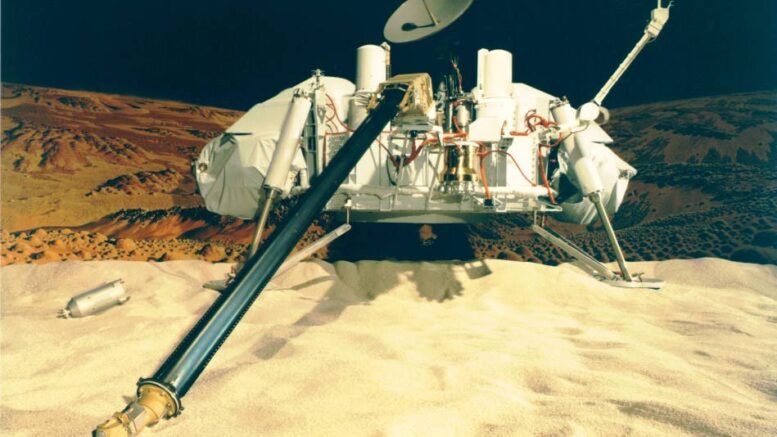With 2 of the 3 Mars missions in 2020 being related to finding life on Mars, we are going to take a look at a lesser known story about an earlier Mars mission that had the same goal of looking for life on Mars. During the 1970’s there was a lot of space travel related to automated solace probes to different planets in the solar system.
In regards to Mars specific Missions in the 1970’s, there were 16 missions, with8 being successful by 2 countries.
But what we want to focus on today was a series of missions by NASA in 1976, which was The Viking Program.Consisted of a pair of American space probes sent to Mars, Viking 1 and Viking 2 were spacecrafts with 2 main parts. There were orbiters designed to photograph the surface of Mars from orbit, and a lander designed to study the planet from the surface. It is here where the story gets interesting.
These 2 spacecraft became the “first U.S. mission to land a spacecraft safely on the surface of Mars and return images of the surface.”[1]
In the end, “Viking Orbiter 1 continued for four years and 1,489 orbits of Mars, concluding its mission August 7, 1980, while Viking Orbiter 2 functioned until July 25, 1978.”[1] The 2 rovers did last longer as the “Viking Lander 1 made its final transmission to Earth November 11, 1982. The last data from Viking Lander 2 arrived at Earth on April 11, 1980.”[1]
According to NASA’s website, “Besides taking photographs and collecting other science data on the Martian surface, the two landers conducted three biology experiments designed to look for possible signs of life. These experiments discovered unexpected and enigmatic chemical activity in the Martian soil, but provided no clear evidence for the presence of living microorganisms in soil near the landing sites. According to scientists, Mars is self-sterilizing. They believe the combination of solar ultraviolet radiation that saturates the surface, the extreme dryness of the soil and the oxidizing nature of the soil chemistry prevent the formation of living organisms in the Martian soil.”[2]
However, as the Labeled Release experiment, showed that the Martian soil tested positive for metabolism, a sign that, on Earth, would almost certainly suggest the presence of life.[3] Moreover, a related experiment found no trace of organic material, suggesting the absence of life. This is something that that some have not been able to rectify and have held onto a belief ever since that the Viking landers did find life on Mars. With the upcoming 2020 missions to Mars, we should get a definitive answer.
The Viking landers attempted to detect biosignatures by utilizing a nutrient solution combined with the Martian soil. This combination would be monitored for signs of metabolic byproducts, which was found for both soil samples taken from under a rock and of the soil. It is possible for nonmicroblal life to produce the same results, but the creator the experiment holds tight that what was found is indeed life. After the upcoming Mars missions, we should hopefully know more and be able to get a better understanding of whether Martian microbial life was really found on the Viking missions!
Sources and Further Reading
If you’re curious about the other Mars missions in 2020, check out this article, and for statistics on historical launches to the red planet, check out this article.
[1] = https://mars.nasa.gov/mars-exploration/missions/viking-1-2/
[2] = https://www2.jpl.nasa.gov/missions/past/viking.html
[3] = https://phys.org/news/2016-10-year-old-viking-life-mars.html

Be the first to comment on "Life On Mars: Already Found?"